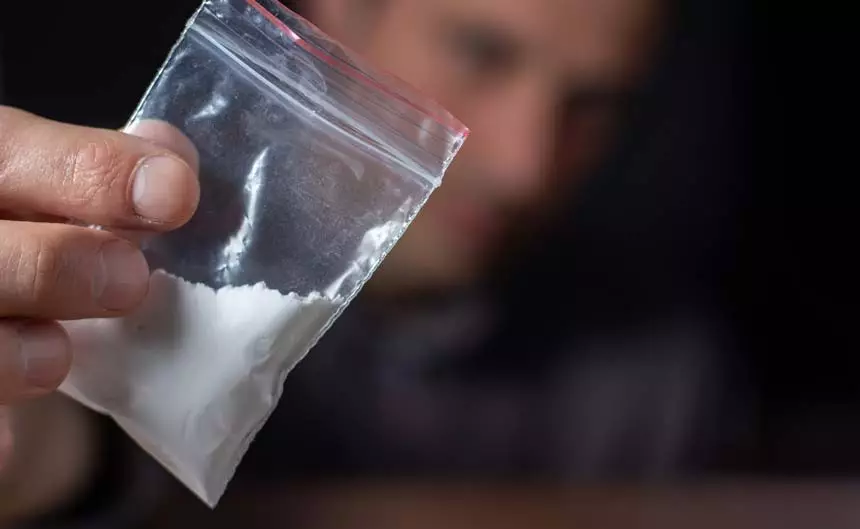What Is Fentanyl?
Table of Contents
- What Is Fentanyl?
- Fentanyl Overview
- Why Causes Fentanyl Addiction?
- What are the Effects of Fentanyl on the Brain?
- What Fentanyl Withdrawal Looks Like
- Minimize Fentanyl Withdrawal Discomfort and Risk
- The Risk of Fentanyl Overdose
- Forms of Effective Fentanyl Addiction Treatment
- Timeline for Fentanyl Withdrawal Symptoms
- Don’t Quit Cold Turkey: Reasons to Choose Medical Detox
- The Road to Recovery After Fentanyl Withdrawal
- Get Help Now
- Medically Reviewed By
Fentanyl belongs to a drug family called opioids, typically prescribed to manage or treat severe pain. Given that fentanyl is so powerful – it is 50 to 100 times more lethal than morphine – it carries a high risk for substance abuse and accidental overdose. These are risks for both people who take it as prescribed, such as in transdermal patch form or use it recreationally.
Thankfully, addicts can successfully get off the drug and maintain a clean lifestyle. But, fentanyl withdrawal side effects can be significant, which is why stopping fentanyl cold turkey is not recommended.
Keep reading to find out more details about opioid addiction and fentanyl withdrawal, as well as get a range of effective treatment options.
Fentanyl Overview
Fentanyl is a highly potent synthetic opioid. Other examples of opioid medications include morphine, oxycodone, and heroin. Unlike plant-based opioids such as heroin and morphine, fentanyl is synthetic.
Fentanyl, one of the most potent opioids, is a controlled substance often used for the treatment of chronic pain in terminal cancer patients or as a surgical anesthetic. Because it is synthetic, fentanyl can be manufactured quickly and cheaply, unlike plant-based opioids, which rely on growth and harvesting to drive manufacturing. The simplicity of manufacture has flooded the illegal drug market with lethal amounts of fentanyl in substances like marijuana, cocaine, and other illicit opioids.
Fentanyl is a potent and efficient pain reliever that requires medical supervision to avoid death and overdose. Even a trace quantity of fentanyl is fatal, especially if you don’t have an opiate tolerance. The difference between getting high and dying is just a few milligrams. This drug is more addictive than other opioids and wears off faster, making it more challenging to overcome addiction.
Why Causes Fentanyl Addiction?
Fentanyl’s high potency makes it addictive. Manifested by withdrawal symptoms upon abrupt cessation of use, fentanyl dependency can occur in people who take the medication legally and responsibly under the guidance of a doctor. Reliance on a substance does not always mean that a person is addicted to it, but addiction is a severe problem that can develop from dependence.
Substance use disorders (SUDs) range from mild to severe, with addiction being the most powerful. SUDs are characterized by repeated substance use and seeking despite adverse effects. Individuals with a drug addiction will continue to take drugs despite the negative impact on their health and their ability to function in social, academic, and other settings. The severity of substance abuse might vary.
Severe withdrawal symptoms can start a few hours after a person addicted to fentanyl stops taking the substance. These withdrawal symptoms can be very unpleasant, which is why many individuals find it hard to stop using fentanyl.
Various medications like Lofexidine help alleviate the symptoms of fentanyl and opioid.
What are the Effects of Fentanyl on the Brain?
Fentanyl, like heroin, morphine, and other opioid drugs, works by binding to opioid receptors in the brain’s reward and pain circuits. However, repeated use of opioids causes the brain to become less sensitive to pleasure, making it difficult to experience joy from sources other than the drug itself. When someone develops a dependency on drugs, their whole existence revolves on obtaining and using them.
Some of the fentanyl’s side effects are:
- Confusion.
- Extreme joy.
- Difficulty breathing.
- Unconsciousness.
- Drowsiness.
- Nausea.
- Constipation.
Fentanyl overdoses can cause respiratory difficulties that lead to hypoxia or a lack of oxygen in the brain. Lack of oxygen may cause coma, brain damage, and even death.
What Fentanyl Withdrawal Looks Like
Once someone is dependent on fentanyl, the body relies on it. At this point, a user needs a larger dose of the drug to get the same effects as they once felt, which for fentanyl users include euphoria, pain relief, and relaxation because the drug boosts dopamine levels in the brain.
The body and mind become used to this drug over time, and dependence can turn into an addiction. If a person decides to get off of the substance, they then must learn to exist without it. If the individual stops abruptly, they may experience fentanyl side effects of withdrawal.
Symptoms of fentanyl withdrawal are similar to those of other opioids. Typical symptoms include sweating, anxiety, achy feeling, irritability, nausea, vomiting, and diarrhea. If the drug dependency is particularly strong, withdrawal can also include life-threatening side effects, such as seizures and cardiac arrhythmias if left untreated. Thus, it is important to talk to a medical professional about how to stop fentanyl withdrawal or at least minimize the associated discomfort.
As for the fentanyl withdrawal symptoms timeline, the effects can start to show within 6-36 hours after the last dose, as was found by a frequently-referenced 1994 study. The withdrawal effects are usually at their most painful around 48 hours after the final dose and, typically, they get weaker from there. When in the midst of withdrawal, an addict may feel the temptation to take fentanyl to alleviate the severe pain. Returning to the substance, though, would only worsen the addiction and might even be fatal.
It is important to note that the exact timeline of the withdrawal symptoms varies from one person to another as each human body is unique and can respond differently to the same dose of a drug. Other factors affecting the length of withdrawal include the individual’s medication history, the typical dosage, and the amount of the last dose.
Minimize Fentanyl Withdrawal Discomfort and Risk
How to taper off the fentanyl patch without withdrawal symptoms can be different for different people. It first requires telling a doctor before stopping use of the patch. Typically, a doctor will gradually reduce the dosage over time. This weaning or tapering process is a way to minimize the unpleasant withdrawal symptoms.
With that said, the process may not address all psychological and physical symptoms, and, again, no single strategy can apply to everyone. Thus, while a doctor may have a plan for how to stop fentanyl withdrawal, it may not stop all symptoms. In this case, schedules and doses may have to alter over time to keep the patient comfortable.
Given the magnitude of physical and psychological fentanyl withdrawal symptoms, it is advisable for an addict to participate in medical detox to get off the drug in the controlled setting of a reputable rehabilitation facility and in the care of experienced medical professionals. The danger of withdrawing from opioids by yourself comes mainly from the body’s response to massive changes in chemical processes in the body and brain.
Following admission to the center, a person goes through a structured detox under the guidance of an addiction professional to minimize risk to the person seeking recovery and maximize comfort to curb the chances of relapse.
Detox is the start of an individualized treatment plan to help a fentanyl addict quit the drug. It can be an inpatient or outpatient format, depending on many factors, such as the lifestyle of the person seeking help and the extent of their addiction.
As said before, each person is unique and, therefore, while some weather the storm relatively quickly, others have issues controlling substance cravings. Addiction treatment options should be chosen according to your specific situation.
The Risk of Fentanyl Overdose
Overdose fatalities are on the rise in the United States, spurred mainly by deadly doses of the opioid fentanyl. Since fentanyl is fueling an overdose pandemic, we must recognize the growing threat fentanyl presents to our communities.
Fentanyl is highly addictive and can lead to severe psychological and physical dependence or death. This high risk of addiction is reflected in national overdose data, with thousands of Americans dying from opioid overdoses.
Despite this, there are effective therapies for opioid and fentanyl addiction that can help break the increasingly hazardous and lethal cycle of addiction.
Fentanyl is increasingly being crushed into tablets meant to appear as legitimate prescription opiates combined with other illegal substances to improve their potency. These counterfeit tablets often contain fatal amounts of fentanyl since they aren’t subject to adequate production oversight.
The DEA claims that a growing amount of heroin, methamphetamine, and cocaine trafficked into the United States has been deliberately adulterated with fentanyl, leading to an increase in overdoses and deaths in various parts of the country. There is no way for a user to know how much fentanyl is in a tablet or other illegal narcotic.
Forms of Effective Fentanyl Addiction Treatment
People with fentanyl addictions respond well to medicine combined with behavioral therapy, much as they do to treatment for other opioid addictions.
Buprenorphine and methadone alleviate cravings and withdrawal symptoms by attaching to opioid receptors in the brain, as fentanyl does. Naltrexone, another addiction medicine, inhibits opioid receptors and counteracts the effects of fentanyl. It is possible to consult a doctor about several treatment alternatives.
Behavioral therapy for opioid addiction can help individuals change their perspectives and actions about drug use, improve their healthy living skills, and remain compliant with their prescribed medicine.
The combination of cognitive behavioral therapy and a voucher-based system of rewarding patients with “points” based on negative drug tests is called contingency management. This approach helps patients change their drug use beliefs and behaviors and manage triggers.
When used in conjunction with medication, these behavioral approaches are highly beneficial.
Timeline for Fentanyl Withdrawal Symptoms
Depending on the person, withdrawal symptoms may not appear until 72 hours after the last fentanyl dose. Within 48 hours, you’ll experience the worst opioid withdrawal symptoms, which can last for up to a week.
However, it’s very uncommon for people to have withdrawal symptoms months or even years after they’ve stopped using. Although physical symptoms often improve within a week, mental symptoms such as despair, anxiety, and cravings can persist far beyond the acute phase.
Opioid addicts in recovery must have consistent medical supervision and support. Post-acute opioid withdrawal cravings can be significantly reduced with the help of replacement medicines like buprenorphine or naltrexone.
Don’t Quit Cold Turkey: Reasons to Choose Medical Detox
Fentanyl reduces the user’s heart rate, breathing rate, and blood pressure. These mechanisms can malfunction if the medicine is discontinued abruptly. Quitting cold turkey may cause a rapid rise in blood pressure and subsequent strokes or heart attacks.
People who try to quit on their own are at a higher risk of relapsing and harming themselves because of the unpleasant withdrawal symptoms they may encounter.
The safest and most effective withdrawal method from opioids like fentanyl is at a medical detox facility. Patients can go through a “weaning off” regimen where they gradually stop receiving fentanyl from their doctors. Weaning off an opioid gradually reduces withdrawal symptoms and their length.
The Road to Recovery After Fentanyl Withdrawal
Following fentanyl detox, the fentanyl rehab treatment program will likely include therapy to assess the root of the addiction. The exact therapy and how it is administered – one-on-one, group, or a combination of the two – will depend on several factors, including the type and severity of the addiction, as well as the preferences of the person in recovery. The addiction specialists may also recommend wellness, skills, and exercise components within the plan.
Get Help Now
If you or a loved one is battling fentanyl addiction or another opioid use disorder, many treatment options are available. Given the seriousness not only of this opiate addiction but also the risks associated with its withdrawal symptoms, this process is one we take seriously. Call our dedicated recovery professionals now at 877-959-7271 to take the important first step toward a better quality of life.
Rachael Goldstein has been a freelance writer for more than 10 years, having written for Find Addiction Rehabs for the past two years. She specializes in writing about the law, mental health, psychology, and addiction. She is the owner and author of the website www.addicted-to-sobriety.com. Rachael is also a licensed attorney in the state of Pennsylvania.





